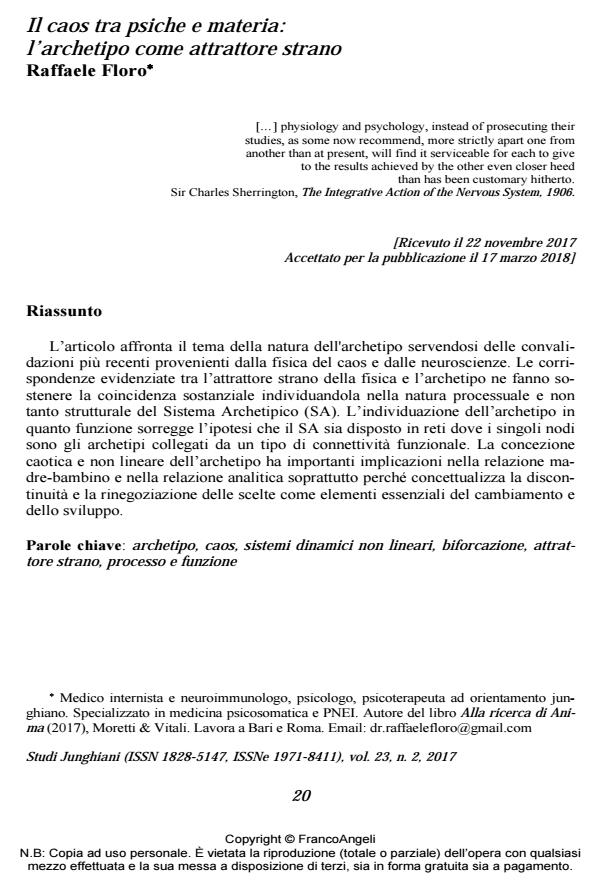Il caos tra psiche e materia: l’archetipo come attrattore strano
Titolo Rivista STUDI JUNGHIANI
Autori/Curatori Raffaele Floro
Anno di pubblicazione 2018 Fascicolo 2017/46
Lingua Italiano Numero pagine 29 P. 20-48 Dimensione file 382 KB
DOI 10.3280/JUN2017-046002
Il DOI è il codice a barre della proprietà intellettuale: per saperne di più
clicca qui
Qui sotto puoi vedere in anteprima la prima pagina di questo articolo.
Se questo articolo ti interessa, lo puoi acquistare (e scaricare in formato pdf) seguendo le facili indicazioni per acquistare il download credit. Acquista Download Credits per scaricare questo Articolo in formato PDF

FrancoAngeli è membro della Publishers International Linking Association, Inc (PILA)associazione indipendente e non profit per facilitare (attraverso i servizi tecnologici implementati da CrossRef.org) l’accesso degli studiosi ai contenuti digitali nelle pubblicazioni professionali e scientifiche
L’articolo affronta il tema della natura dell'archetipo servendosi delle convalidazioni più recenti provenienti dalla fisica del caos e dalle neuroscienze. Le corrispondenze evidenziate tra l’attrattore strano della fisica e l’archetipo ne fanno sostenere la coincidenza sostanziale individuandola nella natura processuale e non tanto strutturale del Sistema Archetipico (SA). L’individuazione dell’archetipo in quanto funzione sorregge l’ipotesi che il SA sia disposto in reti dove i singoli nodi sono gli archetipi collegati da un tipo di connettività funzionale. La concezione caotica e non lineare dell’archetipo ha importanti implicazioni nella relazione madre-bambino e nella relazione analitica soprattutto perché concettualizza la discontinuità e la rinegoziazione delle scelte come elementi essenziali del cambiamento e dello sviluppo.
Parole chiave:Archetipo, caos, sistemi dinamici non lineari, biforcazione, attrattore strano, processo e funzione
Raffaele Floro, Il caos tra psiche e materia: l’archetipo come attrattore strano in "STUDI JUNGHIANI" 46/2017, pp 20-48, DOI: 10.3280/JUN2017-046002